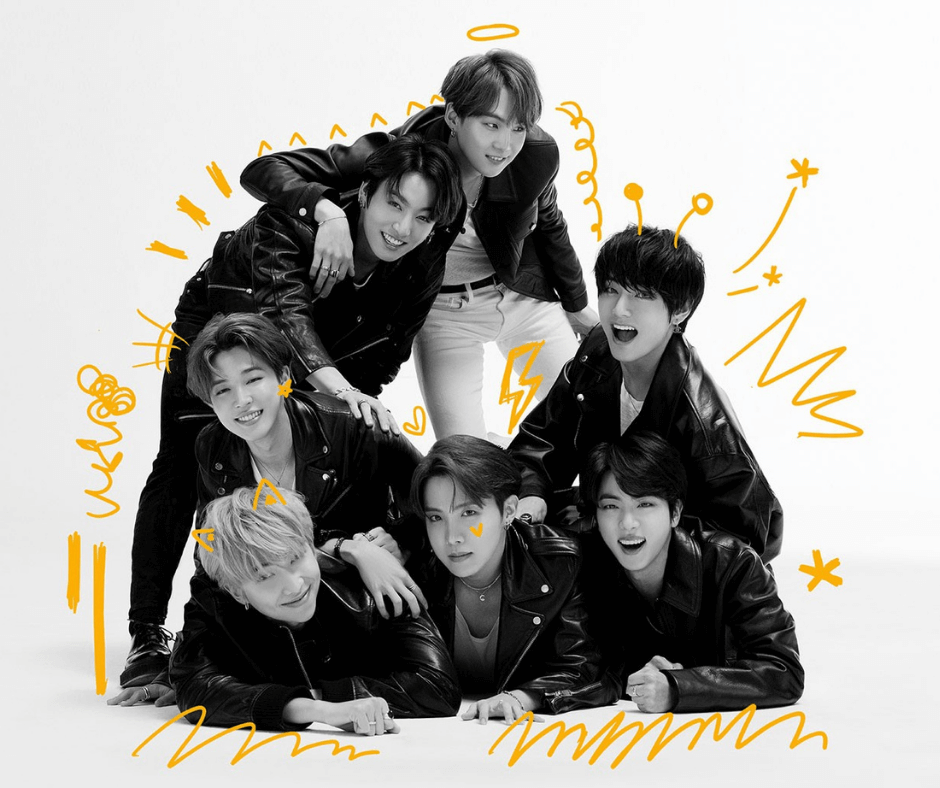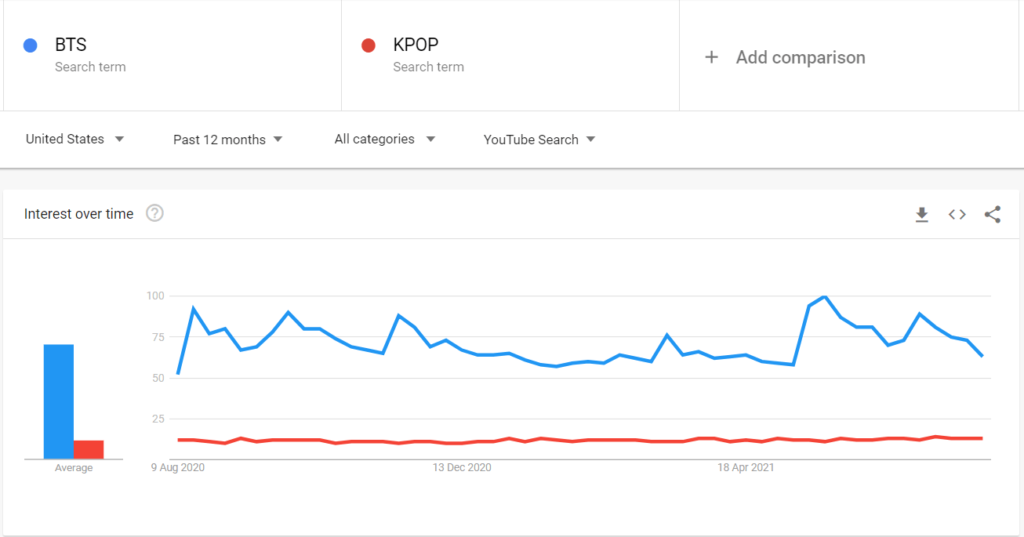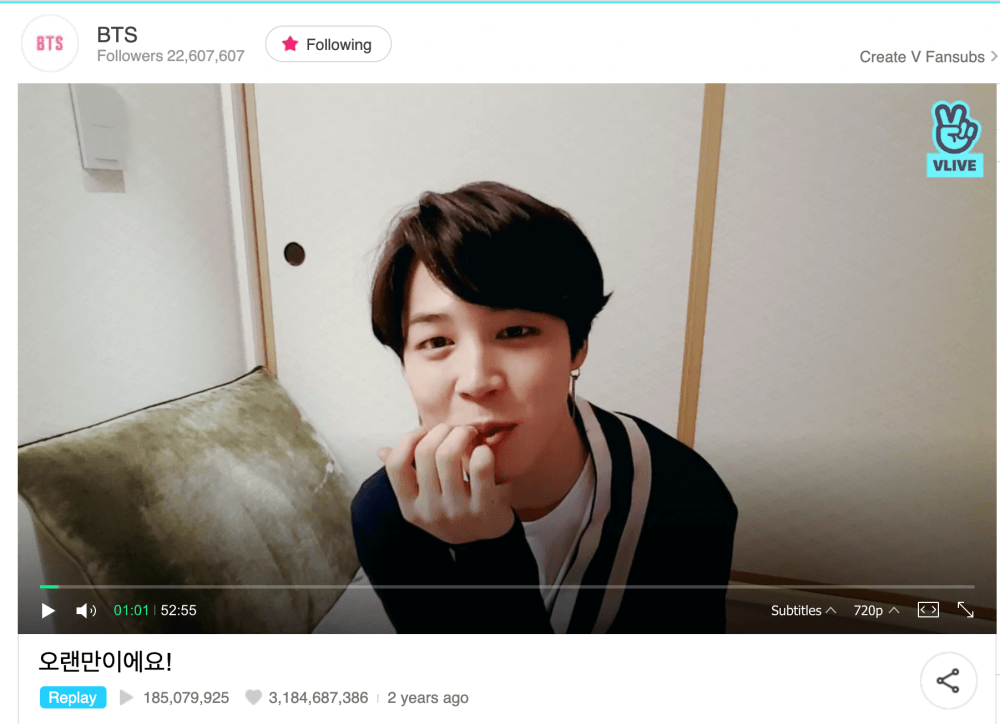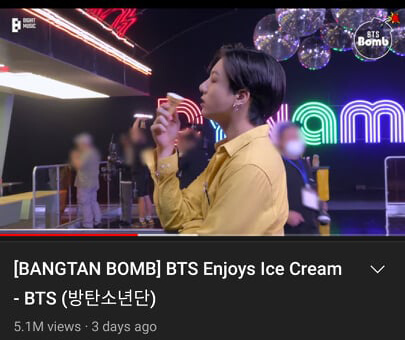If you haven’t heard of BTS yet, I have two questions. First question – are you hiding in a cave? Second question – WHY?!
Kidding aside, BTS is undoubtedly the king of social media. The Korean pop group’s unique use of social media has cultivated a multi-language fan base that is groundbreaking and unheard of.

In a time when the charts have become a sleuth of streams, radio, and music downloads, a sure way of measuring the top in pop might be the Billboard Music Awards’ Billboard Social 50, a sub-chart that measures reach across social networks. BTS has ranked top social artist consecutively since 2017.
Translated as Bulletproof Boy Scouts aka Bangtan Boys, BTS is also the most tweeted about musicians in the U.S. in 2020. A title they have been defending since 2017.
Results like these are insane because they have never released any songs in English. It was only in July of 2020 when they released their first English song, “Dynamite.” And at the time of writing, the Dynamite music video on Youtube already has 1.2 billion views.
BTS: 70.9 Million searches on Youtube
Speaking of Youtube, a look at Google Trends for Youtube, you’ll be able to see that BTS has a mind-boggling 70.9 million searches a month. Approximately 2.3 million people are searching about BTS every day.

In addition to the popularity of the Kpop group. BTS’ Dynamite held the record for most views within 24 hours with 101million views. It was dethroned with 108million by BTS with their second English song, “Butter.” BTS holds five spots on the list out of the top ten most-viewed music videos in 24 hours.
Now you might ask yourself, how can an Asian boy band, who barely speaks English, take social media by storm?
Understanding the struggle of Kpop
South Korea exports a lot of products, from cars to computers to mobile devices. And a Korean Pop song is just another product for them to ship. It’s a tightly controlled big-money game.
And South Korea has already been cultivating its popular music for decades. At the beginning of the 21st century, Korean pop, or K-pop as we call it today, has worked on packaging up appealing pop brands by creating massive factory-like systems.
South Korea perfected this system and produced the likes of Super Junior, Big Bang, Wonder Girls, and 2NE1, to name a few. K-pop grew successful in Asia; however, this success had a hard time reaching elsewhere in the world.
Korea back then was already one of the most wired nations in the world. So when the Youtube era began, record labels in their early development had to get good at Youtube. So it’s just a matter of time for a Kpop artist to blow up and be known internationally.
.The unexpected viral hit
The K-pop industry focused on producing perfectly polished pop dolls, then PSY came along. PSY was not the typical K-Pop star during that time. He’s older, shorter, and less good-looking than his male counterparts in the industry. But he was the answer K-pop needed to capture the world’s attention.
PSY’s Gangnam Style was a cultural phenomenon. The Gangnam Style Youtube music video went viral, and it was the 1st Youtube video to garner 1 billion views in five months. To put into perspective, Justin Bieber’s “Baby” took five years to achieve a billion views.
Everyone mimicked his dance moves, from politicians to well-known celebrities. You might recognize it by the invisible horse-riding dance, which in itself shows just how much of a hit the song was; the standard person can tell what the title of the song was by just its dance.
The theory that K-pop is uniquely and exceptionally video-oriented might help explain how “Gangnam Style” overcame the industry’s weaknesses. It got the world’s attention not by the music itself but because of the video. If the video weren’t as outrageous and hilarious, it would not have gotten the traction it did in Western markets.
With the success that PSY got in the west, you would have thought that other Korean artists would follow in his footsteps and try making American debuts, Right? Yes, they did try, but to no avail.
Big names in Kpop like Rain, Wonder Girls, and Girls’ Generation all tried to appeal to the Americans with English music releases, but all have failed to impact the western public.
So how did BTS break the barrier again, and this time stay on top?
The answer is quite simple; they use the power of social media.
BTS was in the right place at the right time
Today, we know Social Media to be a powerful marketing channel, especially if you have a tiny budget to work with and want to reach a significant number of people.
BTS debuted in June 2013, a surprisingly critical time for K-pop within the English-speaking Internet. The “Gangnam Style” mania had begun to die down; however, social media use among the general public had been slowly building up. And because BTS launched their social media accounts before the Gangnam craze (Twitter made in 2011 and YouTube channel in 2012), they were able to attract more fans.
BTS extensively relied on Youtube and Twitter to promote themselves online, which was a massive contradiction to the standards of the Kpop industry.
During this era, many Kpop artists rely on Korean news channels and tv shows to make a name for themselves. BTS, however, came from a small independent company with a few resources to their name, which makes it challenging to find opportunities in a media sphere that a select few companies have dominated for so long. Traditional media was out of the question.
So, what strategies did BTS take to cultivate a following and why do they have such a strong brand on social media?
Interactivity
BTS is a seven-member boy band. Naturally, you’ll assume that individually, members would have their personal social media accounts, right? Wrong. BTS went against the norm and developed their brand identity by sharing social media accounts. Which includes one YouTube account holding their music videos, one TikTok account, one Instagram account, and one Twitter account. Although this may not be standard for other groups, some think this strategy could be convenient for fans.
With this shared Twitter account, members of the group would interact with their fans, AMRYs as they call themselves. Group members share their daily life by posting selfies, videos, and even birthday wishes to other members.
Instead of fans following each member and trying to get info about their Idol, pun intended, ARMYs have a single place where they can find fun, entertaining content about their favorite group. ARMYs read through these posts; like browsing through a friend’s feed, they feel closer to the members.
BTS also updates their life with ARMYs by Weverse, a fan-exclusive website, where members also read and reply to posts by fans.

Also, they do live streaming from time to time through a Korean video website/app, Vlive. BTS has constantly tried to update fans on their activities through planned and unplanned interactions through live streaming. They provide coverage of their waiting time backstage before concerts, spontaneous lives from members, collectively or individually, with or without a defined purpose. Live streaming is exceptionally interactive since it allows members to see and react to the comments from fans in real-time.
By staying interactive with fans on social media, BTS lessens their distance from ARMYs, creating a strong emotional bond.
Variety
BTS was already uniquely poised for a global takeover. BTS was at the right place at the right time; they haven’t realized it yet.
One of BTS’s most efficient ways to increase their social media presence and remain visible is by adding different content on their social media pages.
Their YouTube channel, BANGTANGTV, posts a series of videos titled ‘BANGTAN BOMB.’ These videos record what happens behind the scenes, from their hard work preparing and practicing for their performances to heart-warming surprise parties on members’ birthdays.

They also have their own online variety shows, Run BTS and Bon Voyage. Run BTS usually includes games and experience in various themes. For example, they asked to learn how to make coffee from a barista in one episode. Bon Voyage, in contrast, records their trip overseas.
These videos show a different side of BTS off-stage, such as some members’ cooking skills, carelessness during travel, and relationships with members. They present BTS’ charm from several viewpoints and reveal some flaws that attract even more fans as they make the world-known artists less remote.
Relatability
When presented with a product online or on the supermarket aisle, you probably asked yourself, “What is it in for me?”. The same thing goes with pop stars. See, you can be the most talented dancer, singer, rapper, or producer in the world, but you still have to get people to care about you to have your work seen. What is it in for me?
BTS was formed initially intending to be a hip-hop group that would make music for young people. As a result, BTS has songs about social issues that the youth can relate to. Tracks about love and sadness. Songs talking about expectations placed on young people to mental health issues and the struggle to find happiness.
Adding the content from their social media accounts about them backstage, struggling with choreography, cooking, and overall wholesome, down-to-earth fun makes the fans understand them even more.
Influencer Marketing
Another strategy BTS leveraged with their social media campaign is Influencer Marketing. Oh wait, but they are already famous; why do they need to get influencers?
By collaborating with international artists like Steve Aoki, Halsey and Nicki Minaj, and Ed Sheeran, BTS could take advantage of the group’s exposure from the millions of social media followers these artists have. Nicki Minaj has 150million followers on Instagram; that’s 150million more people that can get to know BTS.
Being relatable and the interactivity and variety of BTS’ social media coupled with good music collaborations enables BTS to show their charm and bond with fans, which builds a deep-rooted connection.
To Conclude
These are the elements that PSY’s Gangnam Style missed. Yes, one power of social media is the ability to go viral. But viral success is short-lived. The life span of most viral content is pretty restricted, and you should review if the total number of traffic you get from viral content is still getting you a parallel amount of quality traffic.
It’s better to craft social media strategies that will help develop real, longer-term connections with your target audience.
And with the case of BTS, it’s a great social media success story.
We at Annelle Digital would like to help set your social media strategies. Contact us at info@annelledigital.com.



Recent Comments